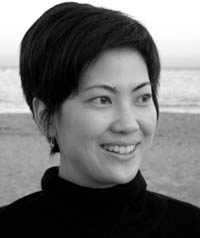WESTMINSTER COLLEGE CONCERT SERIES, Kimi Kawashima, piano, Vieve Gore Concert Hall, Westminster College, March 26
John Cage’s experiments with the piano eventually led to his famous compositions for prepared piano, and resulted in an incredible new chapter in the instrument’s long history. This was an especially impressive innovation by a composer who always strove for the new. Cage discovered that simply by inserting a wide variety of objects into different parts of the piano, the instrument could be transformed into a brand new auditory experience. Cage began his investigation of this technique in 1946, and the following decades must have been an extremely exciting time for the composers, performers and listeners interested in this magnificent instrument and its sonic possibilities.
Today the prepared piano has become very well established. There is a long list of modern composers who have written major works for a growing number of new and different preparations, and it’s also increasingly finding its way into the realm of popular music (perhaps most notably in the work of the successful British musician Richard D. James, who often produces music under the moniker Aphex Twin).
Salt Lake City pianist Kimi Kawashima has performed extensively across the country, yet her performance of Cage’s seminal work for the instrument was her Salt Lake City premier. Let’s hope it will be the first of many.
The evening began with a charming demonstration of the piano in its prepared state. Interested audience members gathered onstage to see the various pieces of plastic, rubber, screws, bolts and nuts inserted into the piano strings. The onlookers were fascinated by Kawashima’s descriptions and explanations of the workings of the preparation, along with several other related topics. Her demonstrations revealed an instrument capable of delivering a complex new sound experience that was dramatically different than standard piano.
The music began soon after with Pierre Boulez’s 12 Notations Pour Piano. An absorbing atmosphere was immediately palpable in Vieve Gore Concert Hall. Boulez’s music began with a quiet, slow and sparse section where the overtones of the many active strings seemed to be constantly at play, slowly ebbing and flowing. The tranquility was soon shattered by a dramatic gesture, fortissimo, culminating in a powerful tone cluster played with the forearm. It was these two moods that dominated the work, along with transitions between the two.
Then it was Cage’s Sonatas and Interludes. Cage’s piano produces sounds that are often compared to instruments found outside western culture, such as those heard in Indonesian gamelan. Cage manipulates the sound of the piano in several ways. First, he leaves many notes untreated. Compared to the other sounds in the preparation, these notes are bright and have a long life before they decay away. Then there are notes that have a strong pitch but a much softer attack and a quicker decay. In contrast are sounds that are mainly percussive, with a sharp attack but a short life, along with a few notes that create special effects, like the buzzing of metal on a vibrating string.
It was with this palette that Kawashima presented her interpretation of the work. Consisting of 20 sections (16 sonatas and four interludes of various forms), Kawashima created music with a wide range of characteristics and moods. She had an obvious and impressive command of the instrument, and harnessed the sounds to create phrase after phrase of precisely crafted music that was spellbinding to listen to. It was a commanding, hypnotic performance and another very successful concert from Westminster College.

